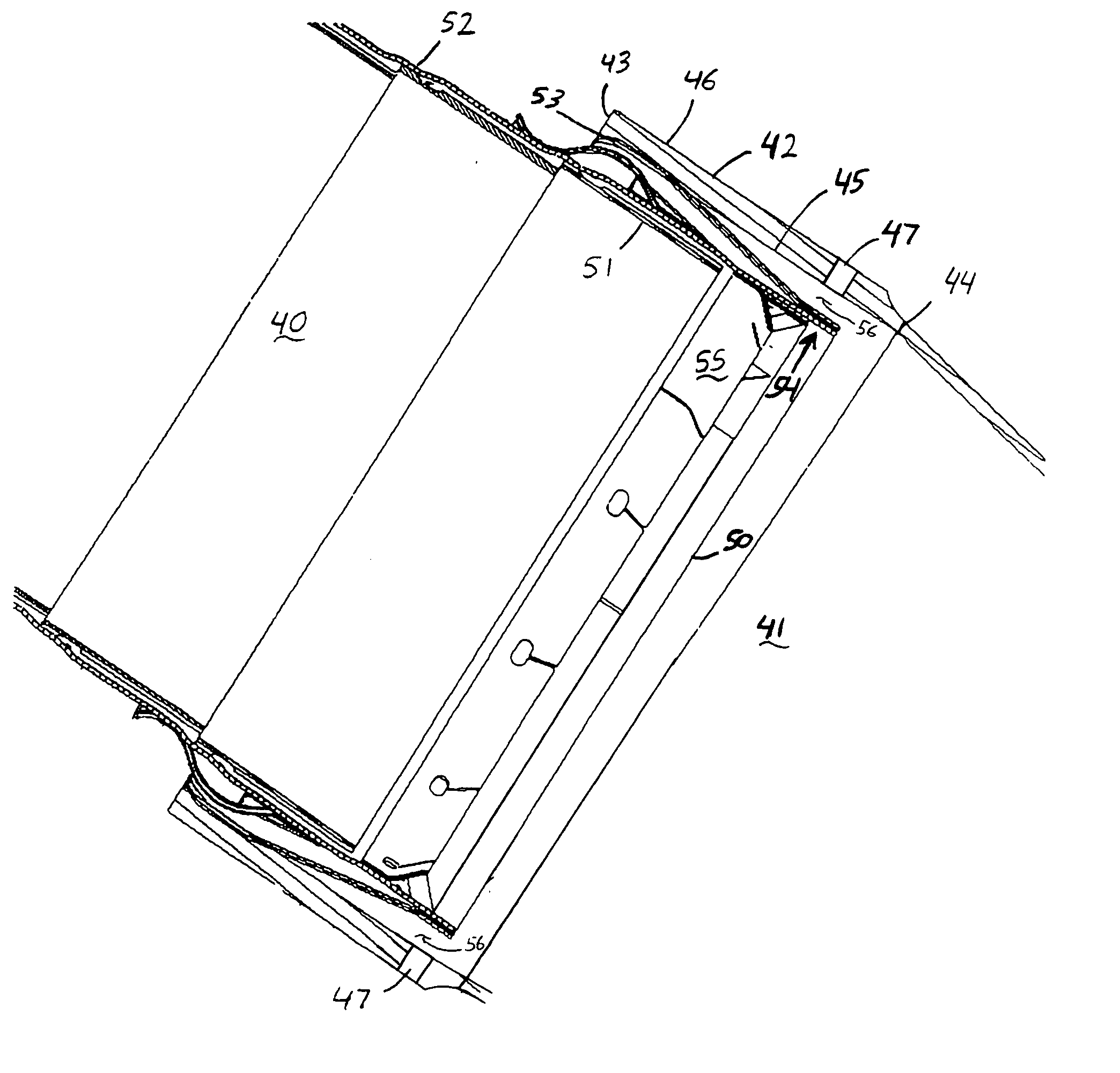Cooling and sealing design for a gas turbine combustion system
a technology of combustion system and cooling air supply, which is applied in the direction of machines/engines, stators, light and heating apparatus, etc., can solve the problems of increasing increasing the metal temperature of the combustion liner, and requiring premature replacement, so as to reduce the temperature of the metal, reduce the wear of the seal, and increase the cooling air supply to the interface region
- Summary
- Abstract
- Description
- Claims
- Application Information
AI Technical Summary
Benefits of technology
Problems solved by technology
Method used
Image
Examples
Embodiment Construction
[0023] The present invention is shown in multiple embodiments in FIGS. 3 through 8. The preferred embodiment of the present invention comprises an interface region between a combustion liner 40 and a transition duct 41 having improved cooling. The combustion liner and transition duct disclosed in the preferred embodiment can be used in a combustor similar to that shown in FIG. 1. Transition duct 41 has an inlet ring 42 that has a first forward end 43, a first aft end 44, a first inner wall 45, a first outer wall 46, and a first plurality of cooling holes 47 that extend from first outer wall 46 to first inner wall 45 and are proximate first aft end 44 of inlet ring 42. Inserted telescopically within inlet ring 42 of transition duct 41 is combustion liner 40 having a second forward end with a plurality of receptacles for a plurality of fuel injectors and a second aft end 50 located within inlet ring 42 of transition duct 41. Combustion liner 40 also has a second inner wall 51, a secon...
PUM
 Login to View More
Login to View More Abstract
Description
Claims
Application Information
 Login to View More
Login to View More - R&D
- Intellectual Property
- Life Sciences
- Materials
- Tech Scout
- Unparalleled Data Quality
- Higher Quality Content
- 60% Fewer Hallucinations
Browse by: Latest US Patents, China's latest patents, Technical Efficacy Thesaurus, Application Domain, Technology Topic, Popular Technical Reports.
© 2025 PatSnap. All rights reserved.Legal|Privacy policy|Modern Slavery Act Transparency Statement|Sitemap|About US| Contact US: help@patsnap.com



